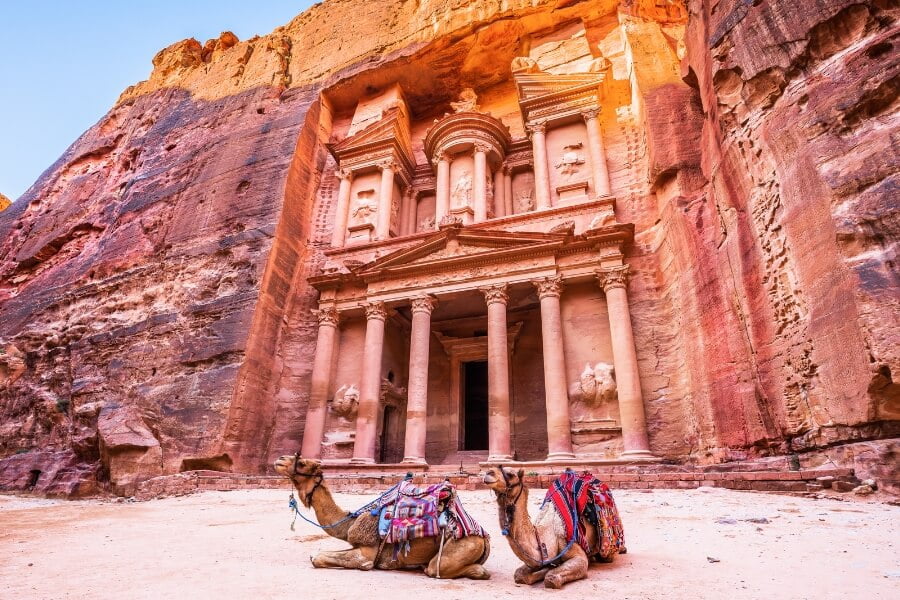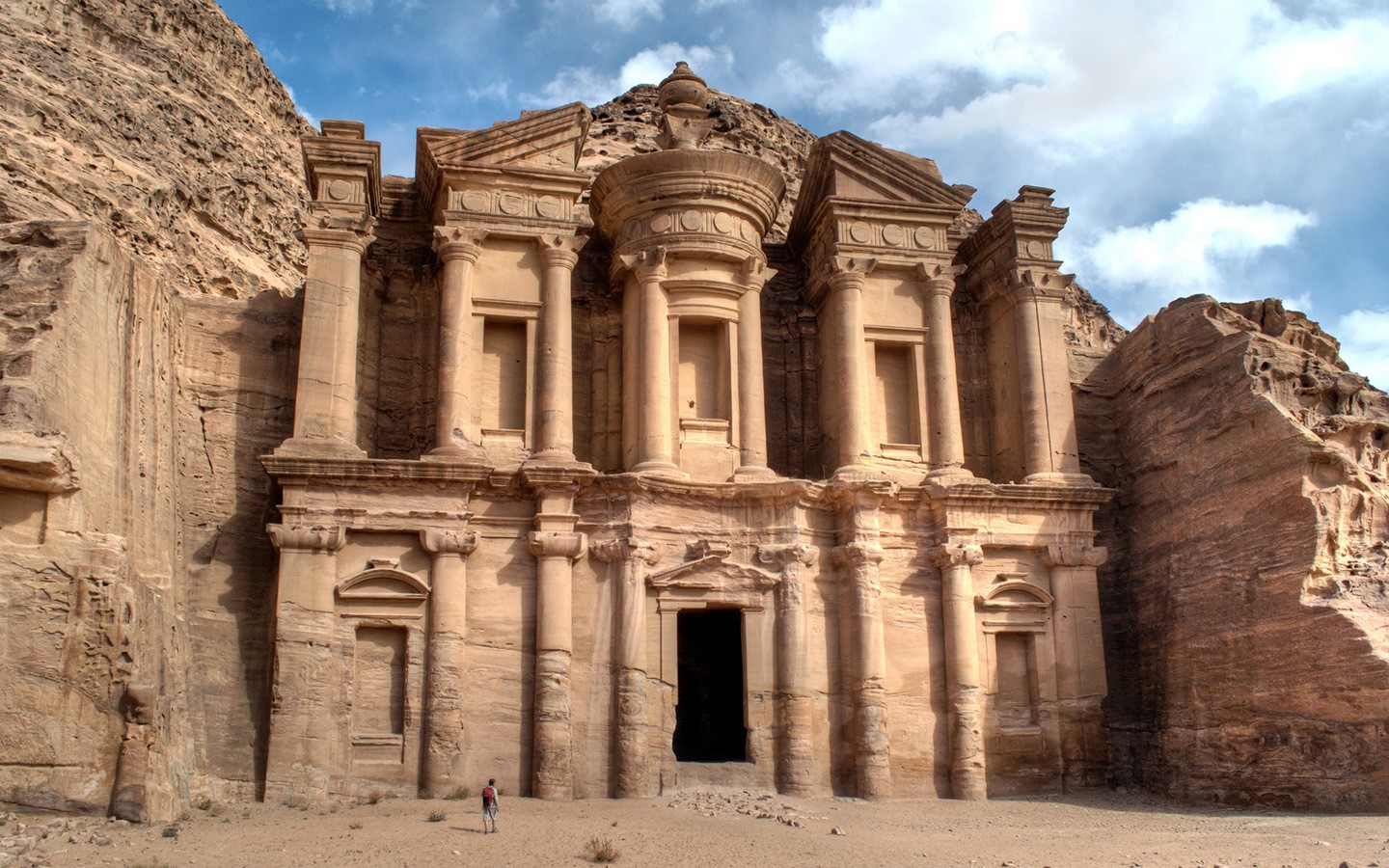
Petra, the ancient Nabataean city carved into sandstone cliffs, is more than just an archaeological marvel; it’s an experience that transports you through millennia. This UNESCO World Heritage site, a jewel of Jordan, beckons with its iconic Treasury, labyrinthine Siq, and the sheer ingenuity of its creators. To truly immerse yourself in its magic, a well-planned visit is essential. This comprehensive guide will equip you with everything you need to know to unlock the secrets of the Rose-Red City.
A Glimpse into Petra’s Storied Past
Before you tread the ancient paths, understanding Petra’s history will deepen your appreciation. The city was established as early as the 4th century BCE by the Nabataeans, an industrious Arab people who transformed it into a vital hub for caravan routes, controlling the lucrative trade of incense, spices, and silks. Their mastery of water management allowed them to thrive in the arid desert, carving intricate water channels and cisterns that still astound today.
Related Articles about The Rose-Red City: Your Ultimate Guide to Visiting Petra:
- Doha: Where Ancient Sands Meet Futuristic Skylines – A Journey Through Qatar’s Vibrant Capital
- Madrid: A Whirlwind Romance with Spain’s Vibrant Capital
- Chile: A Tapestry of Wonders – From Atacama’s Desolation to Patagonia’s Majesty
- Unveiling the Charms of the Netherlands: A Traveler’s Guide to the Best Attractions
- Unveiling the Majesty: A Guide to the Best Tourist Attractions in the United Kingdom
The Nabataeans’ architectural prowess is evident in the city’s Hellenistic-inspired facades, blending local traditions with influences from the civilizations they traded with. Petra reached its zenith under Roman rule, after being annexed in 106 CE. However, shifts in trade routes and a devastating earthquake in 363 CE gradually led to its decline. The city was largely forgotten by the Western world for centuries, becoming a legend whispered by local Bedouin tribes until its "rediscovery" by Swiss explorer Johann Ludwig Burckhardt in 1812. Today, Petra stands as a testament to human resilience, innovation, and artistic expression, a silent witness to empires risen and fallen.
Unveiling Petra’s Main Attractions: A Journey Through Time
Petra’s vastness means you’ll need to pace yourself. Here are the must-see attractions that will leave you breathless:
-
The Siq: Your journey begins with the Siq, a narrow, winding gorge that stretches for over a kilometer. Towering sandstone cliffs, sometimes reaching 80 meters high, create a dramatic, shaded passage. The play of light and shadow, the intricate natural formations, and the occasional remnants of Nabataean water channels build anticipation for what lies ahead. The sheer scale of the Siq is an introduction to the grandeur of Petra itself.
-
Al-Khazneh (The Treasury): Emerging from the Siq, you’ll be met with the iconic Al-Khazneh, or the Treasury. This magnificent facade, carved directly into the sandstone cliff face, is Petra’s most famous landmark. Its intricate Hellenistic design, featuring columns, pediments, and sculptures, is remarkably preserved. Despite its name, the Treasury was likely a tomb for a Nabataean king. The sheer artistry and engineering required to create this masterpiece from solid rock are awe-inspiring. Spend time admiring its details and the way the sunlight illuminates its rose-red hues.
-
The Street of Facades: Beyond the Treasury, the valley opens up to reveal the Street of Facades. This impressive row of tombs, carved into the cliff face, showcases the Nabataeans’ architectural versatility. Each tomb has a distinct design, some simple, others more elaborate, hinting at the status of their occupants.
-
The Amphitheatre: Carved into the mountainside, the Amphitheatre is a testament to Roman influence on Petra. It could seat an estimated 8,500 spectators, and its acoustics are still impressive. Imagine the performances and gatherings that once took place here, echoing through the ancient city.
-
The Royal Tombs: Perched high on the cliff face, the Royal Tombs are a collection of magnificent structures, including the Urn Tomb, the Silk Tomb, the Corinthian Tomb, and the Palace Tomb. Each offers a unique architectural style and a glimpse into the grandeur of Nabataean royalty. The Urn Tomb, with its expansive interior, is particularly striking. The climb to these tombs offers panoramic views of the surrounding landscape.
-
The Monastery (Ad-Deir): For those seeking a more challenging but incredibly rewarding experience, the hike to Ad-Deir, or the Monastery, is essential. This colossal monument, even larger than the Treasury, is situated high in the mountains. The climb involves over 800 steps, but the journey is as beautiful as the destination. The Monastery’s imposing facade and its remote location offer a sense of solitude and wonder. The panoramic views from the top are simply breathtaking.
-
The High Place of Sacrifice: For a different perspective, consider the trek to the High Place of Sacrifice. This ancient ritual site offers stunning views of the city and the surrounding mountains. It’s a place where Nabataean priests performed religious ceremonies, and you can still see the altars and obelisks.
-
The Great Temple and Qasr al-Bint: These are significant ruins in the heart of the city, showcasing the civic and religious life of Petra. The Great Temple complex, with its grand colonnades, hints at the importance of public life. Qasr al-Bint is one of the few freestanding structures in Petra, believed to have been a temple dedicated to Nabataean deities.
Planning Your Petra Adventure: Essential Travel Tips
To make the most of your visit to Petra, careful planning is key:
-
Tickets and Passes: Petra is accessible with a Jordan Pass, which includes your visa fee and entry to Petra and many other attractions in Jordan. If you don’t have a Jordan Pass, you can purchase single-day or multi-day tickets at the visitor center. A 2-day pass is highly recommended to truly explore the site without feeling rushed.
-
Best Time to Visit: The ideal time to visit Petra is during the spring (March to May) and autumn (September to November). During these months, the weather is pleasant, with warm days and cool evenings, perfect for exploring. Summer (June to August) can be extremely hot, making daytime exploration challenging. Winter (December to February) can be chilly, with occasional rain, but offers fewer crowds.
-
Getting There: Petra is located near the town of Wadi Musa. The nearest international airport is Queen Alia International Airport (AMM) in Amman, approximately a 3-hour drive away. You can reach Wadi Musa by:
- Rental Car: Offers the most flexibility to explore Jordan. Roads are generally well-maintained.
- JETT Buses: A comfortable and affordable public bus service operating between major cities in Jordan, including Amman and Aqaba, to Wadi Musa.
- Private Taxis or Transfers: Convenient but more expensive options.
-
Inside Petra:
- Walking: Be prepared to do a lot of walking. Petra is a vast site, and exploring its wonders involves traversing uneven terrain and climbing stairs.
- Footwear: Comfortable, sturdy walking shoes are non-negotiable.
- Hydration: Carry plenty of water. There are vendors inside Petra selling water, but it’s advisable to bring your own to stay hydrated, especially during warmer months.
- Sun Protection: A wide-brimmed hat, sunglasses, and sunscreen are essential to protect yourself from the strong desert sun.
- Dress Modestly: While not strictly enforced within the archaeological site itself, dressing modestly is respectful of local culture, especially when visiting religious sites or interacting with locals.
- Guides: Consider hiring a licensed guide at the visitor center. They can provide invaluable historical context, point out hidden details, and enhance your understanding of the site.
- Transportation within Petra: You can opt for horse-drawn carriages through the Siq (included in your ticket price, but tipping is customary), donkeys, or camels to cover longer distances, particularly for the trek to the Monastery. Negotiate prices beforehand. Be mindful of animal welfare when making these choices.
-
Petra by Night: For a truly magical experience, don’t miss Petra by Night. Held on specific evenings, the Siq and the Treasury are illuminated by thousands of candles, creating an ethereal atmosphere. This is a separate ticketed event and offers a unique perspective of the Treasury.
Where to Rest Your Head: Nearby Hotels
Wadi Musa, the town adjacent to Petra, offers a range of accommodation options to suit every budget:
-
Luxury:
- Mövenpick Resort Petra: Located directly opposite the entrance to Petra, offering exceptional comfort and convenience.
- Petra Marriott Hotel: Situated on a hilltop with stunning views, providing a luxurious stay.
-
Mid-Range:
- Petra Moon Hotel: A popular choice with comfortable rooms and a rooftop terrace offering views of the mountains.
- Odeon Hotel: Offers good value for money with clean and modern facilities.
-
Budget-Friendly:
- Various guesthouses and hostels: Wadi Musa has a good selection of budget-friendly options, often run by local families, offering a more authentic experience. Look for places with good reviews for cleanliness and hospitality.
A Taste of Jordan: Local Food to Savor
While in Wadi Musa, indulge in the delicious flavors of Jordanian cuisine:
- Mansaf: The national dish of Jordan, a hearty meal of lamb cooked in fermented dried yogurt sauce (jameed) and served with rice and flatbread.
- Maqluba: A flavorful rice dish cooked with vegetables and meat, inverted before serving.
- Zarb: A traditional Bedouin barbecue where meat and vegetables are cooked underground in a pit oven.
- Falafel and Hummus: Staple street food, perfect for a quick and tasty bite.
- Kunafa: A delectable dessert made with cheese, semolina dough, and syrup, often topped with pistachios.
- Local Teas and Coffees: Enjoy traditional cardamom-infused coffee and sweet mint tea.
Many restaurants in Wadi Musa offer a mix of local and international cuisine. Don’t hesitate to try the local specialties for an authentic culinary experience.
Navigating Jordan: Transportation Options
Beyond reaching Wadi Musa, understanding transportation within Jordan will enhance your trip:
-
Within Wadi Musa: The town is relatively compact and walkable. Taxis are readily available for shorter distances.
-
Exploring Beyond Petra:
- Rental Car: Provides the ultimate freedom to explore at your own pace.
- JETT Buses: A reliable and cost-effective option for intercity travel.
- Shared Taxis (Servis): A more local and economical way to travel between towns, but requires flexibility with schedules and seating.
- Private Taxis/Drivers: Offer convenience and can be hired for day trips or longer journeys. Negotiate prices in advance.
-
To Aqaba (Red Sea): If you plan to visit the Red Sea, Aqaba is about a 2-hour drive from Wadi Musa. JETT buses and private transfers are available.
-
To Amman: The capital city is a 3-hour drive north, with regular bus services and private transport options.
A Journey of a Lifetime
Visiting Petra is an unforgettable journey into the heart of history and human achievement. By understanding its past, planning your itinerary wisely, and embracing the local culture, you’ll unlock the full magic of this rose-red city. From the dramatic descent through the Siq to the awe-inspiring facades carved into the cliffs, Petra promises an adventure that will linger in your memory long after you’ve departed its ancient embrace. So, pack your bags, lace up your walking shoes, and prepare to be captivated by the enduring wonder of Petra.








